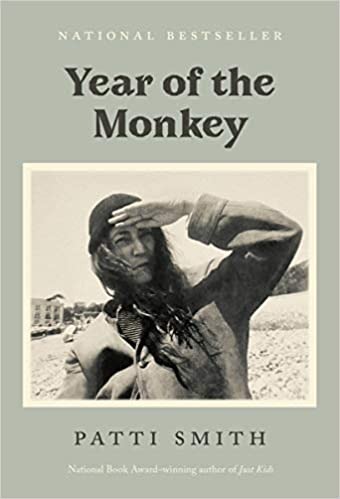About this item
From the National Book Award-winning author of Just Kids and M Train, a profound, beautifully realized memoir in which dreams and reality are vividly woven into a tapestry of one transformative year.Following a run of New Year's concerts at San Francisco's legendary Fillmore, Patti Smith finds herself tramping the coast of Santa Cruz, about to embark on a year of solitary wandering. Unfettered by logic or time, she draws us into her private wonderland with no design, yet heeding signs--including a talking sign that looms above her, prodding and sparring like the Cheshire Cat. In February, a surreal lunar year begins, bringing with it unexpected turns, heightened mischief, and inescapable sorrow. In a stranger's words, "Anything is possible: after all, it's the Year of the Monkey." For Smith--inveterately curious, always exploring, tracking thoughts, writing--the year evolves as one of reckoning with the changes in life's gyre: with loss, aging, and a dramatic shift in the political landscape of America. Smith melds the western landscape with her own dreamscape. Taking us from California to the Arizona desert; to a Kentucky farm as the amanuensis of a friend in crisis; to the hospital room of a valued mentor; and by turns to remembered and imagined places, this haunting memoir blends fact and fiction with poetic mastery. The unexpected happens; grief and disillusionment set in. But as Smith heads toward a new decade in her own life, she offers this balm to the reader: her wisdom, wit, gimlet eye, and above all, a rugged hope for a better world. Riveting, elegant, often humorous, illustrated by Smith's signature Polaroids, Year of the Monkey is a moving and original work, a touchstone for our turbulent times.
About the Author
Patti Smith
Patti Smith is considered a poet whose energy and vision found its voice in the most powerful medium of our culture, music. As one of the early pioneers of New York City’s dynamic punk scene, she has been creating her unique blend of poetic rock and roll for over 35 years. She was born in Chicago in 1946, the eldest of four siblings and was raised in South Jersey. From an early age, she gravitated toward the arts and human rights issues. She studied at Glassboro State Teachers College and migrated to New York City in 1967. She teamed up with art student Robert Mapplethorpe and the two encouraged each other’s work process, pursuing painting and drawing while she focused on poetry.In February 1971, Smith had her first public reading at St. Mark’s Church on the Lower East Side, accompanied by Lenny Kaye on guitar. That same year she co-wrote and performed the play Cowboy Mouth with playwright Sam Shepard. Continuing to write and perform her poetry around New York, including at the legendary Max’s Kansas City, Patti Smith and Lenny Kaye combined their collective and varied musical roots and her improvised poetry. The independent single release, Hey Joe/ Piss Factory, featured Tom Verlaine. The trio helped to open up a restricted music scene that centered on CBGB’s in New York City. After recruiting guitarist Ivan Kral, they played CBGB’s for eight weeks in the spring of 1975 and then added drummer Jay Dee Daugherty. Smith described their work as ‘‘three chords merged with the power of the word.’’ Smith was signed by Clive Davis to his fledgling Arista label and recorded four albums: Horses (produced by John Cale), Radio Ethiopia (produced by Jack Douglas), Easter (produced by Jimmy Iovine), which included her top twenty hit Because the Night, co-written with Bruce Springsteen, and Wave (produced by Todd Rundgren).In October 1979, Smith retired from the public eye and moved to Detroit with Fred ‘‘Sonic’’ Smith. In 1980, they married, had two children and wrote songs together with no regret for the self imposed exile from show business. In 1988, they recorded Dream of Life (produced by Fred ‘‘Sonic’’ Smith and Jimmy Iovine) that included the classic anthem, People Have the Power, which the two wrote while she did the dinner dishes. It combined his White Panther polemics with her revolutionary spirit. It also marked her final collaboration with three of her closest companions, all who met with untimely deaths; Robert Mapplethorpe, who photographed her for the cover; Richard Sohl, who provided all of the keyboards; and her husband, Fred ‘‘Sonic’’ Smith who had composed the music.In the summer of 1995, with the help of old and new friends, Smith released Gone Again (produced by Malcolm Burn and Lenny Kaye), a highly acclaimed meditation on passage and mortality. In touring the album, opening for Bob Dylan, it also marked her
Report incorrect product information.


